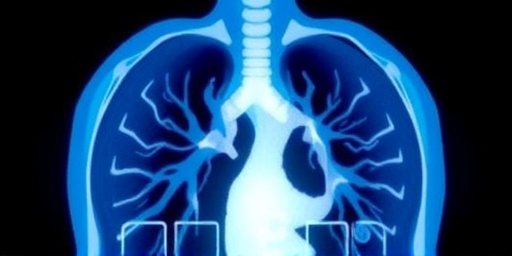Washington, D.C. – The Department of Veterans Affairs (VA) is launching a nationwide campaign to urge high-risk veterans to prioritize Lung cancer screening through quick, low-dose CT scans, stressing that early detection can transform a deadly diagnosis into a treatable condition. With Lung cancer claiming over 125,000 lives annually in the U.S., veterans face disproportionately higher risks due to decades of smoking and environmental exposures, but VA officials report that screening catches 80% of cases at stage 1, where five-year survival rates exceed 92% – compared to just 6% for late-stage diagnoses.
- Veterans’ Unique Lung cancer Risks Stem from Service-Related Exposures
- Low-Dose CT Scans: The Game-Changer in Early Lung Cancer Detection
- VA Rolls Out Expanded Screening Access Across All Facilities
- Heroic Turnarounds: Veterans Share Early Detection Success Stories
- Next Steps for Veterans: Seamless Path to Life-Saving Screenings
Veterans’ Unique Lung cancer Risks Stem from Service-Related Exposures
Military service has long been linked to elevated lung cancer risks among veterans, a fact driving the VA’s urgent screening push. Historical data from the VA’s National Cancer Institute reveals that veterans are 20-30% more likely to develop lung cancer than civilians, primarily due to high smoking rates during service eras and toxic exposures. From Agent Orange in Vietnam to burn pits in Iraq and Afghanistan, these hazards have left lasting impacts.
According to Dr. David A. Maddox, VA Chief of Staff for Oncology Programs, “Veterans served our nation in hazardous conditions, and now we’re fighting back with proactive screening. Smoking remains the top culprit – over 70% of our Vietnam-era vets were smokers – but early intervention via CT scan changes everything.” The U.S. Preventive Services Task Force (USPSTF) guidelines, adopted by the VA, target those aged 50-80 with a 20-pack-year smoking history who currently smoke or quit within the last 15 years.
- Key Risk Factors for Veterans:
- Prolonged tobacco use during active duty
- Exposure to asbestos, diesel fumes, and radiation
- Post-9/11 burn pit toxins linked to 30% higher incidence
- Family history amplifying genetic vulnerabilities
Recent VA studies published in the Journal of Clinical Oncology underscore these disparities: Gulf War veterans show a 15% increased lung cancer mortality rate, prompting expanded eligibility for screenings at all 170+ VA medical centers.
Low-Dose CT Scans: The Game-Changer in Early Lung Cancer Detection
At the heart of the VA’s initiative is the low-dose computed tomography (CT scan), a non-invasive procedure taking just 10-15 minutes with radiation exposure equivalent to a mammogram. Unlike traditional chest X-rays, which miss 75% of early tumors, CT scans detect nodules as small as 6mm, enabling early detection before symptoms like persistent cough or chest pain emerge.
Clinical trials like the National Lung Screening Trial (NLST) demonstrated a 20% reduction in lung cancer mortality for screened high-risk groups. VA data mirrors this: In 2023, over 50,000 veterans received screenings, identifying 1,200+ cancers at treatable stages. “It’s a simple scan that saves lives,” says VA pulmonologist Dr. Elena Rivera. “We see tumors when they’re pea-sized, not grapefruit-sized.”
The process is straightforward:
- Eligibility check via VA health portal or provider
- Quick CT scan at no cost to veteran
- AI-assisted analysis flags suspicious nodules
- Follow-up biopsy if needed, often outpatient
Addressing concerns, the false-positive rate has dropped to under 15% with advanced protocols, minimizing unnecessary procedures. For veterans, this means faster paths to surgery, targeted therapies like immunotherapy, or even watchful waiting for benign findings.
VA Rolls Out Expanded Screening Access Across All Facilities
The VA’s campaign, dubbed “Breathe Easy: Screen Today,” expands lung cancer screening to every VA facility, with mobile units targeting rural areas. Announced last week at the VA’s annual health summit, the program allocates $50 million in new funding for equipment and staff training. Secretary Denis McDonough emphasized, “No veteran should face lung cancer without a fighting chance. We’re making screening as accessible as enrolling in benefits.”
Participation has surged 25% year-over-year, with telehealth options for initial risk assessments. Partnerships with the American Lung Association provide educational webinars, reaching 100,000+ veterans. In pilot programs at VA hospitals in Texas and California, screening adherence hit 65% among eligibles, yielding a 28% uptick in early detection rates.
Demographic breakdowns show urgency:
| Group | Eligibility Rate | Cancers Detected Early (2023) |
|---|---|---|
| Vietnam Era | 45% | 450 |
| Gulf War | 32% | 320 |
| Post-9/11 | 18% | 210 |
| Other Eras | 5% | 220 |
This data fuels optimism, as CT scan adoption correlates with halved advanced-stage diagnoses.
Heroic Turnarounds: Veterans Share Early Detection Success Stories
Behind the statistics are real veterans whose lives pivoted thanks to timely lung cancer screening. Army veteran Mark Thompson, 68, from Ohio, credits his VA CT scan for spotting a 1cm nodule in 2022. “I felt fine – no cough, nothing. Surgery removed it cleanly; I’m cancer-free now,” he told reporters. His story echoes hundreds: five-year survival for stage 1 lung cancer hits 92%, per American Cancer Society data.
Marine Corps vet Lisa Hargrove, a post-9/11 servicemember exposed to burn pits, underwent screening after a routine checkup. “The scan caught it early; targeted drugs shrank the tumor without chemo,” she shares. VA oncologists report immunotherapy success rates doubling with early detection, from 20% to 45% response.
These narratives combat stigma around smoking histories. Support groups like the VA’s Lung Cancer Mutual Help network connect 10,000+ members, fostering peer encouragement for screening. “Hearing from survivors motivates holdouts,” notes group facilitator Tom Reilly, a two-time survivor.
Next Steps for Veterans: Seamless Path to Life-Saving Screenings
As the VA’s campaign gains momentum, eligible veterans can act immediately via My HealtheVet portal, calling 1-877-4AID-VET, or visiting va.gov/lung-screening. Providers conduct rapid eligibility quizzes, often same-day approving CT scans. No copays apply for service-connected risks, and travel reimbursement covers rural trips.
Looking ahead, the VA plans AI enhancements for scan analysis by 2025, potentially slashing review times by 50%. Collaborations with the CDC aim to integrate screening into annual wellness visits, targeting 200,000 annual screens by 2026. Public health experts predict a 15-20% drop in veteran lung cancer deaths if uptake reaches 70%.
“Early detection isn’t optional – it’s essential,” VA Undersecretary for Health Dr. Shereef Elnahal urges. “Veterans, your service deserves this second line of defense.” With momentum building, the message is clear: A single CT scan could be the difference between statistics and survival.







